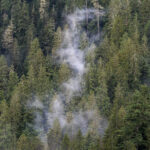Libel-proofing CAR investigations
Tip Sheet
Numbers don’t lie – or do they? The conclusions drawn from a computer-assisted reporting (CAR) investigation could be incorrect or tarnish the reputation of a person or company. Making sure the story is accurate, complete and libel-proof is as important as re-checking the math. Toronto Star investigative reporter Rob Cribb and University of King’s College journalism prof Dean Jobb offer tips on how to put the story on a solid legal footing.
Global Investigative Journalism Conference
Toronto, Canada, May 26, 2007
Presenters:
Dean Jobb
Journalism Professor
University of King’s College, Halifax
Author, Media Law for Canadian Journalists
Editor, Law Section, J-Source.ca
(djobb@dal.ca)
Robert Cribb
Toronto Star Deputy Investigative Editor
Instructor, Ryerson University
Co-author, Digging Deeper: A Canadian Reporter’s Research Guide
(rcribb@thestar.ca)
Numbers don’t lie – or do they? The conclusions drawn from a computer-assisted reporting investigation could be incorrect or tarnish the reputation of a person or company. Making sure the story is accurate, complete and libel-proof is as important as re-checking the math. Journalists must be able to recognize when their conclusions could be defamatory and what has to be done to put the story on a solid legal footing.
Ask the following questions to identify danger zones in your CAR investigation and to take the chill out of libel:
n
Is the data accurate? Is the name of each person and company that appears the story correct? Check them against other sources – court records, business filings, city directories, media archives. A typo or data-entry error in the source data could be the difference between identifying a real culprit and being forced to publish a correction or apology to a misidentified individual or company – or facing a libel suit.
n
Do the numbers add up? It sounds trite, but step back and review your calculations and methodology. Do the figures that underlie your conclusions make sense? Are they too good (or too extreme) to be true? If your conclusions seem illogical or unrealistic, they probably are.
n
Is the data complete? A report that an employer has the worst workplace safety record in the jurisdiction is fine – unless the database obtained from the regulator is incomplete and companies with worse safety records have been left out. Cast the net widely when interviewing and checking media archives. Be on the lookout for offenders who are known to have problems but are noticeably absent from your database. It could be a warning sign that data has been overlooked or withheld. Toronto Star reporters investigating high-rise slumlords visited problem properties and discovered neighbouring properties not identified in the city’s inspection database where conditions were as bad or worse.
n
Has the data been verified? Reports and numbers are no substitute for seeing with your own eyes. A joint Toronto Star/Hamilton Spectator/Kitchener-Waterloo Record investigation into aviation safety last year relied on airline incident data that included tens of thousands of initial reports of problems reported by air traffic controllers, pilots and other aviation officials. But these initial reports are sometimes disproved upon further investigation. Beware of drawing conclusions from incident data without digging deeper into what actually happened.
n
Is the data up to date? It’s one thing to report that inspectors have cited a restaurant for food safety violations, but what if management was never informed or ownership has changed? A Halifax reporter investigating the city’s restaurants interviewed the manger of one restaurant and discovered it was being sold and was under new management. A straight report of the food-safety violations would have unfairly harmed the reputation of the new owners, who bore no responsibility for the previous lapses. The lesson? Follow up and get the facts behind the numbers.
n
Do the conclusions point to a specific individual or company? A news story can be defamatory only if it identifies a specific person or corporation. If people or companies are being singled out, you must seek a response and report any information that tempers the picture emerging from the data. A company criticized for its safety record, for instance, may be the victim of lax inspection or reporting practices, or may have legitimate complaints about over-zealous inspectors. Follow up and give the targets of your investigation a chance to add context and balance to the story. Fairness demands it. So does the law.
n
How large is the group the findings target? After the Toronto Star analyzed 480,000 arrest records in 2002 and found evidence of racial profiling, the city’s police union sued on its members’ behalf for an astounding $2.6 billion in damages. The lawsuit quickly fizzled, however, when a judge ruled that it is impossible to libel an entire police force. Canada’s courts have ruled that members of groups suing for libel must show that a defamatory statement refers specifically to them. The size of the group matters – a broadcaster was successfully sued for quoting a Vancouver prostitute who said the “top” members of the vice squad took bribes. Nine members of the squad tried to sue, but only the top two officers succeeded. “An attack on a substantially large and indeterminate group of persons does not give rise to a cause of action to any of its members,” one judge has noted, “unless there is something in the publication pointing to a particular member.” The smaller the group, the greater the risk. And the wording is also crucial. Twenty-five guards were able to sue over a story describing all guards at a particular jail as “goons” and “not having the brains to be Nazis.” While no guards were named, a judge ruled the generalizations smeared the entire staff.
[node:ad]n
Are there libel-proof sources to back up your findings? The Toronto Star used the story of a black man who was suing police for assault and unlawful arrest to humanize its “Race and Crime” series. The man’s allegations were unproven but, since they were made in court documents filed as part of his civil suit, qualified privilege shielded the paper from any possible libel suits related to his case. Qualified privilege also protects information drawn from judges’ rulings, official reports, legislative debates and inquiry findings. Use them to build a libel-proof story.
n
Does the evidence reflect the findings? Don’t go overboard – exercise restraint when interpreting data. Many news organizations retain experts and consultants to review their data and findings, to ensure both are correct. CAR pioneer Philip Meyer advises journalists to follow three simple rules to avoid problems with statistics: Explain your methods. Apply formulas consistently. And, perhaps most importantly, don’t claim too much for the results.
n
Could your conclusions defame someone? Could what others are saying about your findings defame someone? The numbers may be solid, but your conclusions and the reactions of experts and stakeholders could be over the top – and defamatory. Make sure the data supports what’s being said about the data. A scathing comment or colourful quote may be tempting to use, but it may also drag an entire story into dangerous legal waters.
Libel-proofing: A Checklist
Britain’s highest court, in its 1999 ruling in Reynolds v. Times Newspapers, created a new libel defence – the defence of “responsible journalism.” Even if defamatory statements and allegations turn out to be incorrect or false, the House of Lords says the story is protected from a lawsuit if it is fair and balanced and the journalist followed accepted reporting practices. Judges take into account ten factors, including the journalist’s conduct, whether unproven allegations have been reported as fact, and the steps taken to verify information. In a 2006 ruling, Jameel v. Wall Street Journal Europe, the House of Lords stressed that the list is not intended to create hurdles to trip up journalists, and media organizations are not expected to cover every base in every story.
While these rulings are not binding on Canadian courts, they are already having an impact on defamation law in this country. The so-called Reynolds factors provide a ten-point checklist that journalists can use to ensure their stories measure up:
1) The seriousness of the allegation. The more serious the charge, the more the public is misinformed – and the individual harmed – if the allegation is not true.
2) The nature of the information and the extent to which the subject-matter is a matter of public concern.
3) The source of the information. Some informants have no direct knowledge of the events. Others have axes to grind or are being paid for their stories.
4) The steps taken to verify the information.
5) The status of the information. The allegation may have already been the subject of an investigation which commands respect.
6) The urgency of the matter. News is often a perishable commodity.
7) Whether comment was sought from the plaintiff. He may have information others do not possess or have not disclosed. An approach to the person suing for libel, however, will not always be necessary.
8) Whether the article contained the gist of the plaintiff’s side of the story.
9) The tone of the article. A newspaper can raise queries or call for an investigation. It need not adopt allegations as statements of fact.
10) The circumstances of the publication, including the timing.




